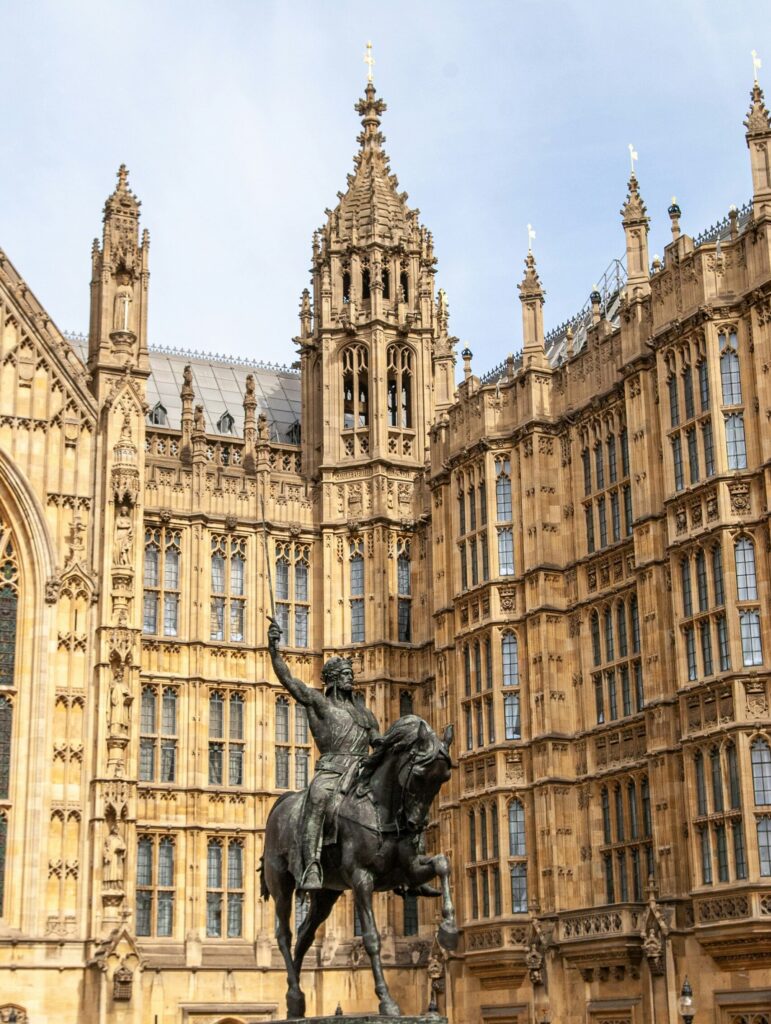Author: Chloe Schuber, Operations and Research Assistant
Young people (18-25) have long been the backbone of progressive politics. However, the 2024 elections in the United States and the United Kingdom highlighted a growing paradox: while young voters overwhelmingly support progressive policies, they are increasingly disillusioned with the traditional left-leaning progressive parties that have historically championed these causes. This frustration was evident in two ways: generally, there was a decline in youth turnout in both countries; and more specifically, the number of young people voting for the Democrats and Labour Party fell. In the US, youth voter participation fell to 42%, down from over 50% in 2020, and for the first time since 2008, Democrats failed to secure at least 60% of the youth vote — a 6% drop, with some shifting to Republicans. In the UK, turnout among young voters plummeted from 47% in 2019 to 37% in 2024, the lowest in at least a decade. Among all age groups, young voters exhibited the most dramatic shifts: Labour’s youth support dropped by 21% to 41%, Conservative backing collapsed by 14% to just 5%, and third-party support surged by 37%, reaching a total of 48% of the youth vote. This trend is more than just an electoral shift: it is a warning sign. When youth abandon not just parties but democratic electoral participation itself, there is a breakdown in representation. Systematic change is essential to restore faith in democracy and ensure its legitimacy for young people.
Structural Barriers to Youth Political Engagement
Institutional Distrust and Voting Restrictions
Today, there are structural and systemic barriers that discourage youth participation in elections. In the US, restrictive voting laws — such as strict ID requirements and reduced polling locations on college campuses — disproportionately impact young voters. In the UK, the introduction of voter ID laws has made it harder for younger and lower-income voters to participate. Additionally, both countries’ electoral systems – which tend to use the ‘winner takes all’ First-Past-the-Post — incentivise parties to focus on older, more reliable voter blocs rather than investing in long-term youth engagement. Young people can often feel overlooked and unwelcome in their country’s political system, which gradually leads to disengagement and a declining faith in the system’s effectiveness.
Institutional distrust also plays a critical role here. Many young voters perceive mainstream parties as beholden to corporate interests, with campaign finance structures — especially in the US — reinforcing a political class that prioritizes wealthy donors over grassroots movements. This cynicism is reflected in increased political activism outside traditional electoral channels, with young people favouring direct action, mutual aid networks, and digital activism over formal party politics.
The Digital Divide: Political Parties’ Failure to Adapt
While young voters are very politically active online, mainstream parties have failed to effectively engage with them in digital spaces. Platforms like TikTok, Instagram, and X have become critical arenas for political discourse in the US and UK, yet the Democratic and Labour parties struggle in maintaining meaningful engagement on this platforms. Instead, younger voters turn to independent content creators, grassroots activists, and alternative media for political information, further weakening their connection to traditional parties.
The rise of digital activism presents both a challenge and an opportunity. While social media has facilitated greater political awareness and the upholding governmental institutions accountable, it has also contributed to growing polarization and distrust in traditional political institutions. To reconnect with young voters, parties must integrate (better) digital outreach into their broader campaign strategies — not merely as a tool for voter mobilisation but as a space for genuine political dialogue.
Contextualizing: The Growing Policy Disconnect
Economic Concerns Driving Youth Alienation
These structural issues are exacerbated by policy misalignment. Economic concerns remain a top priority for young voters in both countries. Young people experience complex economic distress, from living with their parents due to high rent prices, to unemployment due to limited job opportunities and other struggles relating to the cost-of-living crisis. In the 2024 elections, 64% of young voters in the US and 41% in the UK cited inflation and the cost of living as their top concerns. Despite this, mainstream left parties seem to have fallen short of presenting viable solutions that resonate with younger generations. These political responses feel increasingly detached and signal that young people’s material realities are not being prioritised.
In the UK, Labour’s reluctance to introduce rent controls or pursue wealth redistribution has led to disillusionment amongst young people because of the electoral promises made earlier this year, especially as London rents surged by 9.2% in 2024. The party’s reversal on abolishing tuition fees has further eroded trust. 76% of youth believe the political system bears the primary responsibility for this issue, among others, while 50% think the economic system, or at least the way it is currently structured—favouring markets and private interests over public welfare— should also share the burden and look inwards for change.
In the US, student debt reached $1.77 trillion in 2024. While President Biden enacted partial loan forgiveness (eliminating around 10%), many young voters found it inadequate. Meanwhile, the median US home price exceeded $400,000, and wage growth failed to keep up with inflation. As a result, many young voters are disengaging from the Democratic Party or seeking alternatives. The collapse of traditional youth support for Democrats and Labour suggests that, unless these parties offer bold solutions to pressing economic issues, they risk further electoral decline among younger generations.
Climate Change and Environmental Disillusionment
Both the Democrats and Labour have struggled to align with young voters’ urgency on climate issues. The Biden administration’s approval of the Willow Project in Alaska was widely condemned by young environmentalists, reinforcing perceptions that the Democratic Party prioritizes corporate interests over climate action. Democrat-supporting youth have the highest rate of disapproval on Biden’s climate policies (34%) amongst Democrats. In the UK, Labour’s refusal to commit to ending North Sea oil and gas exploration alienated young voters who overwhelmingly support aggressive decarbonization policies. 36% of youth say they would consider voting for the Green Party, reinforcing their dissatisfaction with the main party’s climate policies.
Foreign Policy: The Current Case of the Middle East
This misalignment extends to foreign policy issues. In both the US and UK, the Israel-Palestine conflict revealed a stark generational divide. In the US, 35% of young voters oppose military aid to Israel, and just 46% of young Democrats trust Biden to handle the conflict—while 45% trust neither party. Though 67% supported a ceasefire in Gaza, Biden and Harris failed to act, prompting widespread accusations of hypocrisy. In the UK, 41% of 18-24 year-olds sympathise more with Palestine – over 10% above the national average—while only 10% backed Israel. Labour’s refusal to take a clear stance on Palestinian self-determination further alienated young voters, particularly among ethnic minorities. This is viewed as a moral failure: some young people see parties preaching justice whilst funding conflict and only acting when put under public pressure. The result is deepening disillusionment, not just with leaders but with governmental institutions themselves. The frustration extends to Ukraine, where many prefer diplomacy over endless aid.
What We Need: Systemic Reforms for a Stronger Democracy
To reverse this decline in youth political engagement, political institutions and parties — especially the Democrats and Labour — must undertake comprehensive reforms:
- Modernise Digital Engagement: Parties must invest in digital strategies that go beyond traditional campaign advertising. Engaging with independent creators, hosting policy discussions on digital platforms, and directly interacting with youth-led movements will be critical in rebuilding trust.
- Institutionalise Youth Representation in Party Structures: Beyond outreach, young people must have a seat at the decision-making table. Establishing further civic education, youth advisory councils, increasing youth representation in party leadership, and integrating youth perspectives into policy development would help align party platforms with younger voters’ priorities.
- Push for Electoral Reforms: Preferential voting would give young voters greater influence in shaping policy by enabling a more pluralistic political landscape. A change in the voting system alters incentives not only for political parties but also for voters. Under a preferential electoral system, a young voter is able to make multiple choices about whom they should be represented by., which is less not possible under current First Past The Post system.
Conclusion: The Future of Youth Political Engagement
The disengagement of young voters from the Democratic and Labour parties is not merely a reflection of political apathy but a symptom of systemic failures. Both parties have consistently deprioritised youth concerns in favour of electoral pragmatism, resulting in diminished trust and declining turnout. Addressing this crisis requires more than performative outreach — it demands structural reforms, and a commitment to genuine youth representation as well as substantive policy shifts. If left unaddressed, this disengagement risks the further de-legitimisation of the representative democratic model. Democracy does not die when people shift parties, it dies when they stop believing in a system unable to represent them.



